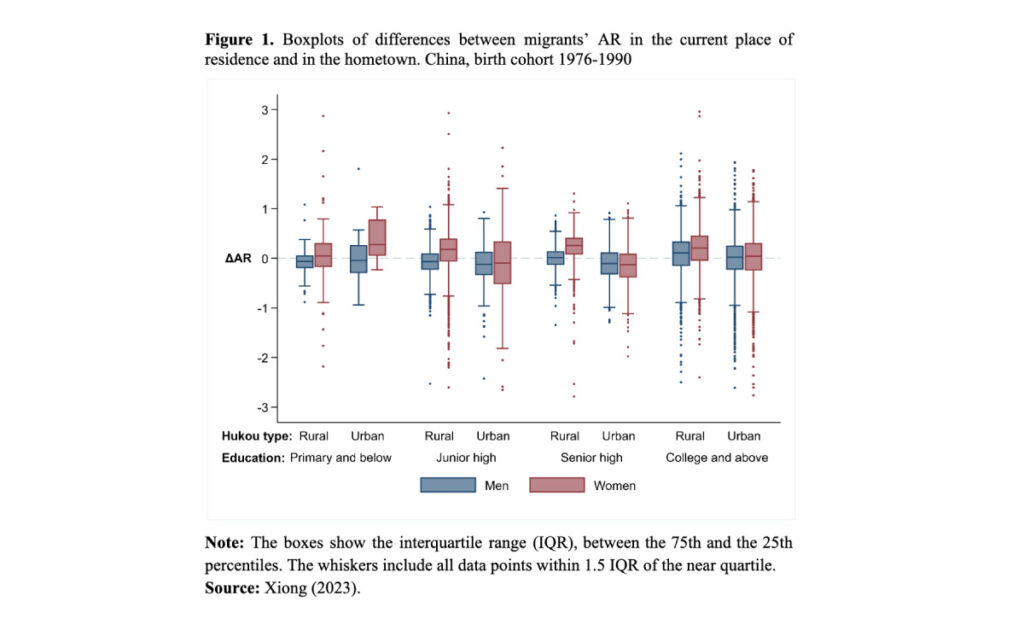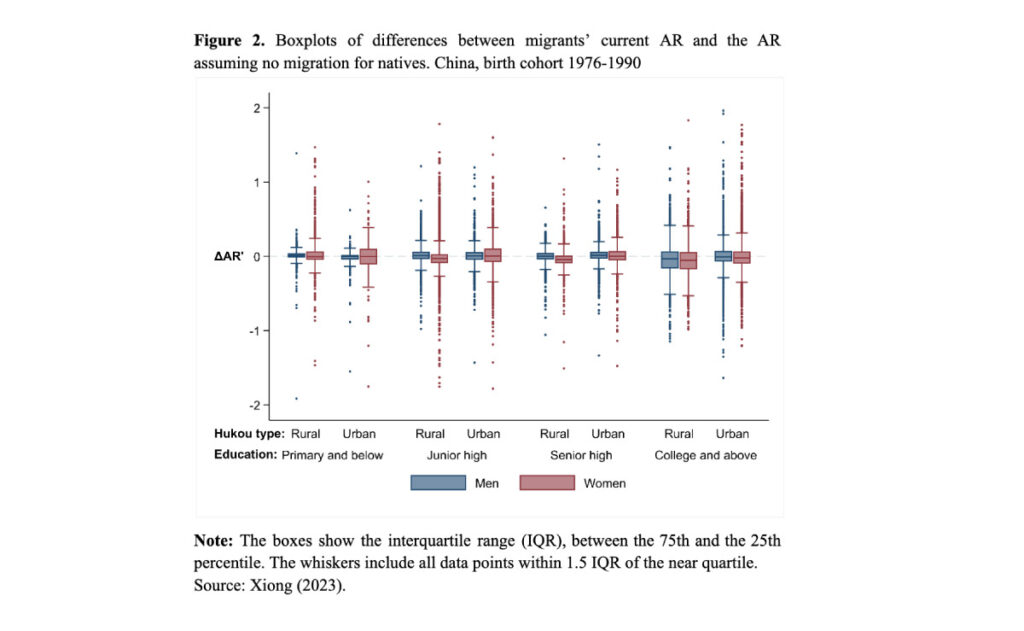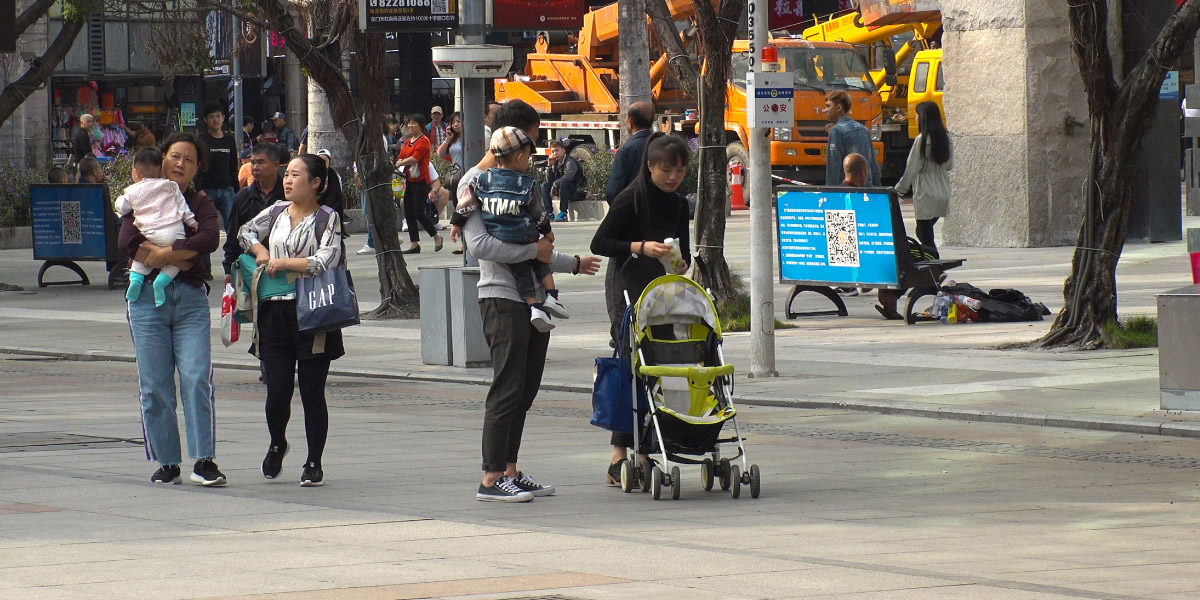After quantifying and comparing the intensity of competition in local marriage markets for unmarried (internal) migrants in their hometown and in their destination place, Wanru Xiong finds that in China, marriage prospects are better for migrant women in their current place of residence than in their hometown, but worse for men.
People migrate in search of a better future, be it for education, employment, love, or a combination of reasons. However, the consequences of migration can be complex and far-reaching. For example, migration that facilitates a match in the labor market might also influence prospects in the marriage market and vice versa (Stark, 1988). While the impact of migration on the labor market is often readily apparent in terms of job opportunities and wages, its effects on the marriage market are less obvious.
According to the 2010 population census in China, a significant proportion of the population at that time (16.2%) were migrants. Of these migrants, 78% of women and 93% of men moved primarily for work, education, or vocational training. This raises the question of how their migration affected their marriage prospects, as well as those of the native population affected by changes in the spatial distribution of potential partners.
Quantifying marriage prospects
In a recent article (Xiong, 2023), I used an extended version of the Availability Ratio (AR), first introduced by Goldman et al. (1984), to measure individual marriage prospects in local marriage markets. The weighted AR takes into account local matching patterns by age, education, and residency status.
The weighted AR is calculated by dividing the weighted number of potentially suitable marital partners for an individual (known as “matches”) by the weighted average number of matches of that individual’s matches (known as “competitors”). The ratio, therefore, measures the average number of matches per competitor. This AR essentially measures the intensity of competition for suitable partners in a given area, with a higher AR indicating a more favorable situation.
For each person in the microdata sample of the 2010 China population census (around 10% of the total population), I calculated an AR based on their current prefecture of residence and a hypothetical AR as the potential outcome for comparison. The hypothetical scenario differs by migration status.
Comparing migrants’ marriage prospects before and after migration
For migrants who do not live in the prefecture of their household registration address (hukou), usually the hometown, I assign the person to the hometown prefecture to calculate an alternative AR, keeping that person’s other traits and everyone else’s residence constant. This AR for migrants thus measures the marriage prospects the migrant would have if he/she returned to the hometown. Comparing this hypothetical AR and the migrant’s current AR after migration reveals changes in marriage prospects for migrants due to migration.
Figure 1 presents box plots of the difference of AR (ΔAR = AR in the current prefecture of residence − AR if the migrant returned to the hometown) by sex, hukou type (urban/rural), and education for unmarried migrants aged 20-34 who moved for labor market reasons. Having a ΔAR greater than zero means that marriage prospects improved after migration. The plots highlight the contrast by sex.

For migrant women, the median of ΔARs is above zero, except for those with urban hukou and junior/senior high school education (5.9% of migrant women), meaning that most of them have a higher AR in their current place of residence than in their hometown. Migrant women with rural hukou increased their ARs via migration more than their peers with urban hukou, except for the least educated. Among migrant women with rural hukou, the better educated had a larger increase in the AR, whereas among those with urban hukou, the least educated gained the most.
The plots look different for migrant men. Migrant men without a college degree mostly experienced a decrease in AR after migration. Within this group, those with rural hukou lost less than those with urban hukou, except for the least educated. In contrast, college-educated migrant men mostly had an increased AR in their current place of residence.
In sum, migrant women, especially those of rural origin, mostly improved their marriage prospects via migration. This was also true for migrant men with a college degree, but not for less educated men.
Comparing marriage prospects with and without migration for natives
For natives who stayed in the prefecture of their household registration address, I calculated a hypothetical AR under the scenario of no migration. I assigned all migrants to their hometown prefecture and kept everything else constant in the calculation. Differences between the real AR and this hypothetical AR for natives thus reflect the impact of internal migration on their marriage prospects.
Figure 2 presents boxplots of differences between migrants’ current AR and the AR assuming no migration for natives (ΔAR’ = AR in the current place of residence − AR assuming all migrants returned to their hukou address) by sex, education, and hukou type.

The plots show that most native women would have had a higher AR if there had been no migration, especially those with rural hukou. This negative externality of internal migration on native women may result from an outflow of potentially marriageable men or an inflow of “competitors” (immigrant women).
The experience for native men varies by education. For those with primary education or less not much would have changed: in both cases, their ARs are low. With internal migration (i.e., in the real case, as opposed to the hypothetical situation of no internal migration) those with junior or senior high school education mostly have slightly higher ARs , whereas those with a college degree are, on average, worse off.
Discussion
The findings highlight a potential trade-off between labor market opportunities and marriage prospects for migrants in China. While migrant men can substitute for native men in the labor market, they may struggle to find suitable partners due to female status hypergamy, particularly those coming from less developed inner regions and working in blue-collar jobs in their new location. As a result, they may have stronger incentives than women to return to their hometowns after working for long enough to accumulate sufficient resources for marriage.
In contrast, migrant women with lower socioeconomic status may be able to improve their marriage prospects by marrying native men in their new location, which could lead to a “bride drain” out of the sending regions. For migrant women, improvements in both the labor market and marriage market are often compatible goals in their migration decision, as evidenced by their increased marriage prospects after migration.
I also found that for non-migrants likewise, marriage prospects can be affected by the spatial redistribution of potential partners, but the impact is relatively small compared to the changes experienced by migrants. These findings underscore the complex dynamics at play in migration and marriage decisions, highlighting the potential challenges in balancing career and personal goals.
References
Goldman, Noreen, Charles F. Westoff, and Charles Hammerslough. 1984. “Demography of the marriage market in the United States.” Population Index: 5-25.
Stark, Oded. 1988. “Mariage et migration.” European Journal of Population 4: 23-37.
Xiong, Wanru. 2023. “Love is Elsewhere: Internal Migration and Marriage Prospects in China.” European Journal of Population 39(1): 6.


